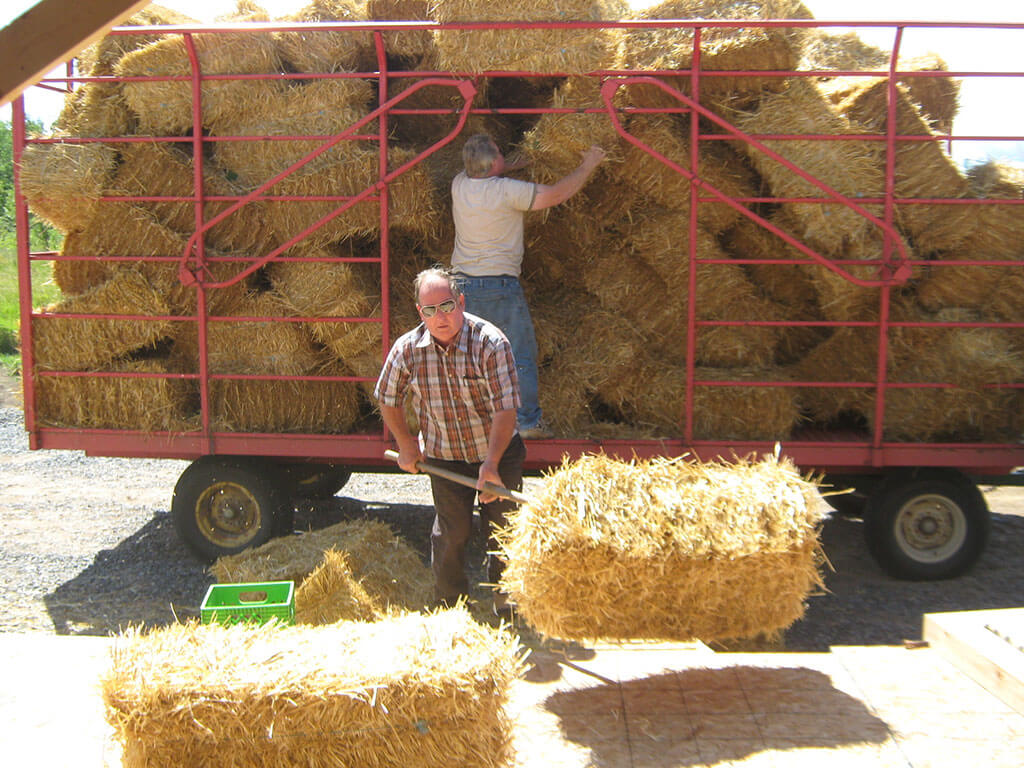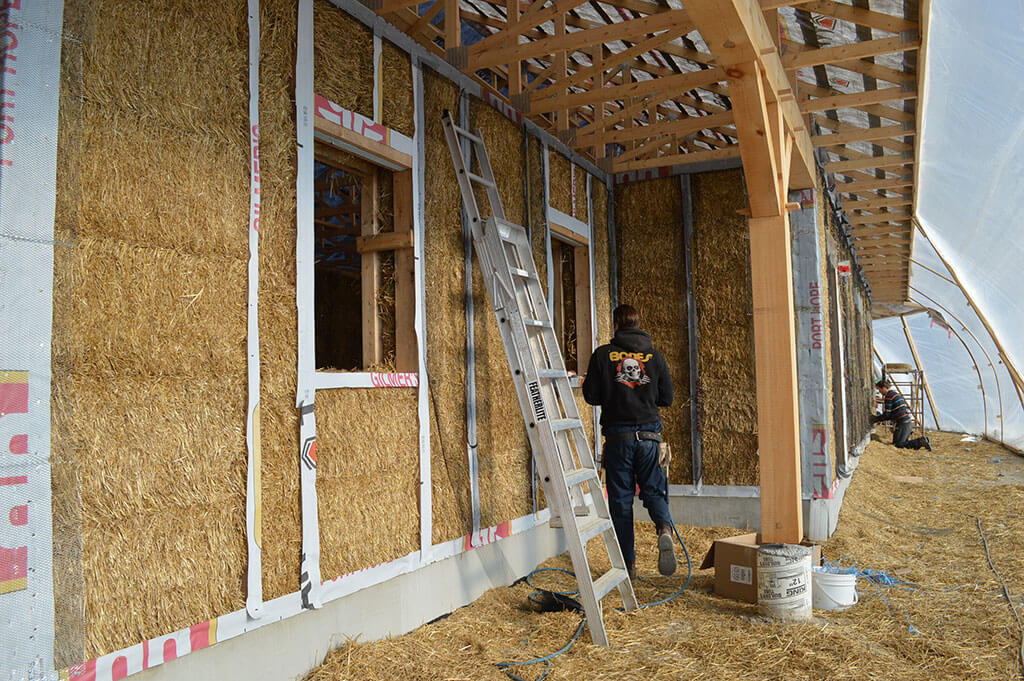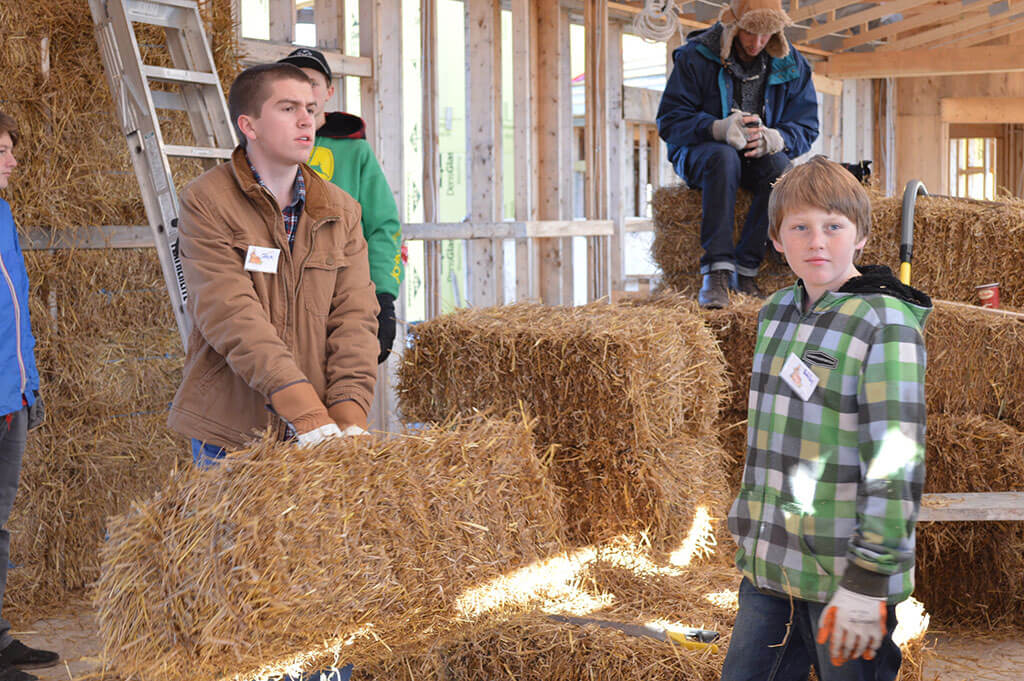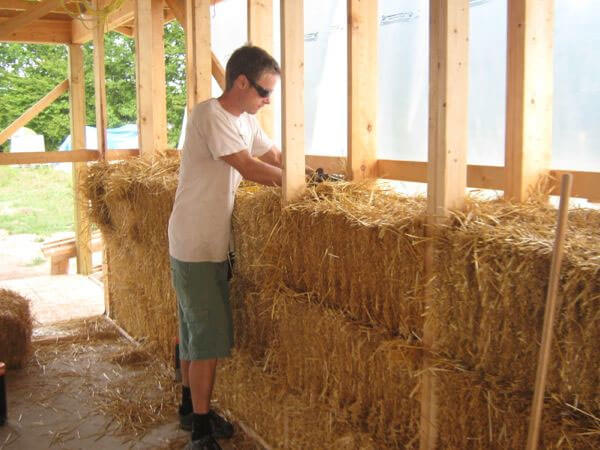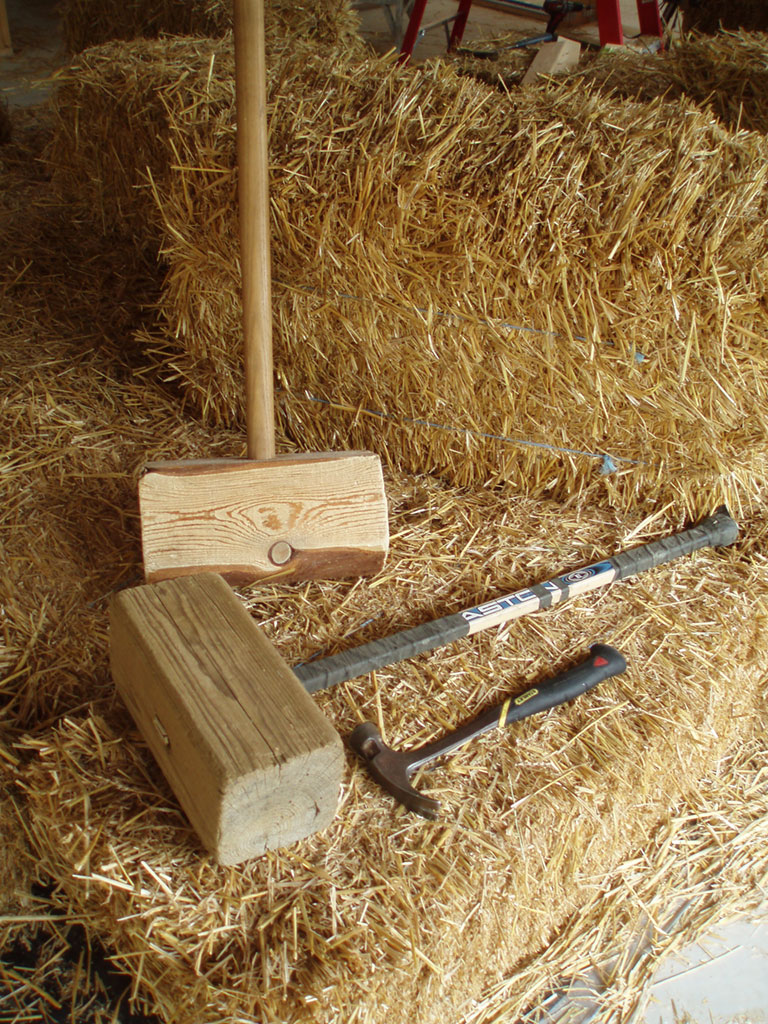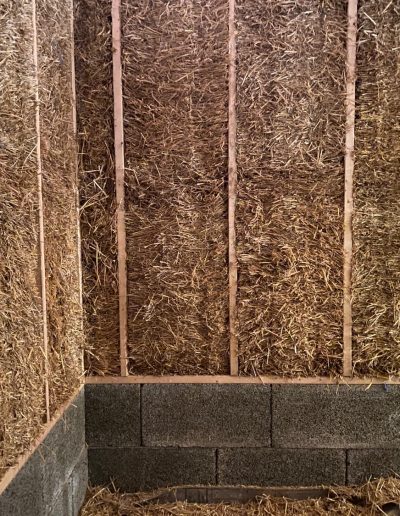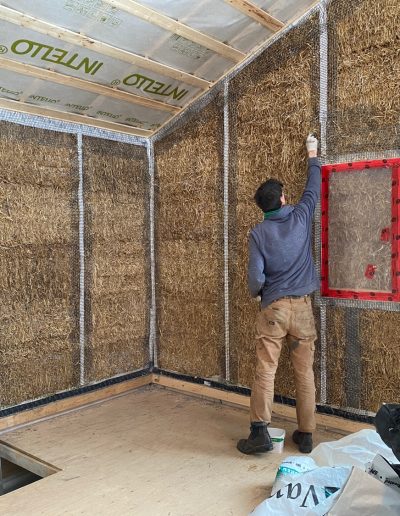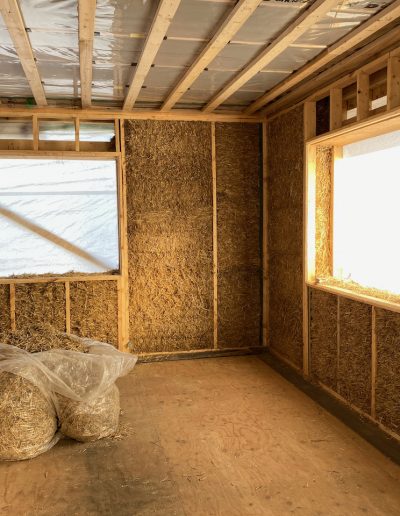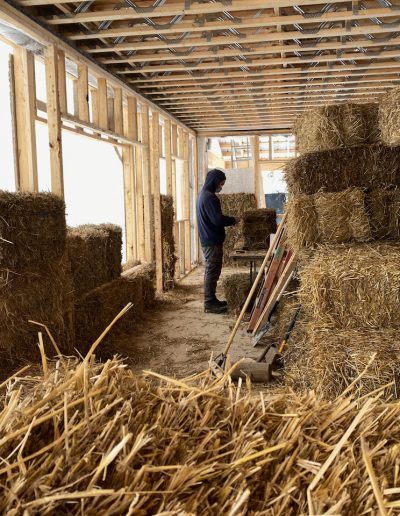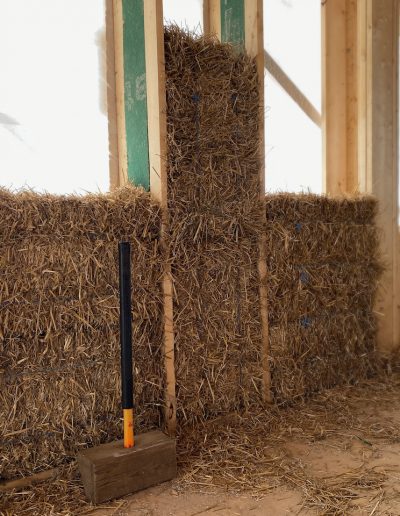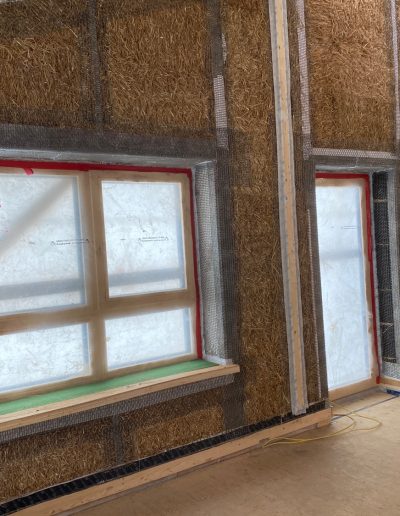STRAW BALE WALLS
Why straw ?
- Carbon-Storing – one planting a year can sequester and store approximately 5 tC02/hectare/year.
- Local – The shorter the supply chain, the better. Our bales travel 40 to 60 km from field to house.
- Supports Farmers – We buy farmers leftovers. Straw is stalk that is leftover after harvest.
- Natural & Non-Toxic – Made by Nature, straw contains no harmful off-gassing chemicals.
- Excellent Thermal Performance – R-30 means exceptional indoor comfort – warm in the winter and cool in the summer with no drafts.
- Highly Regenerative – Straw is annually renewable in Ontario.
- Abundant – No supply chain issues.
- Fire Rating – Plastered straw bale walls surpass the 45 min rating required by the Ontario Building Code for residential construction.
- Vapour permeable – Straw and clay-lime plaster allow excess moisture to escape, avoiding problems associated with trapped moisture.
- Quiet – STC 55 – Bales sandwiched by two layers of 1″ plaster score an impressive recording studio grade of sound-proofing.
‘Hay is for horses, and straw is for houses.”
Straw is often confused for hay, but they are different plants with different uses .
Hay is food: it’s a mix of dried grasses that horses and cows eat. It’s not suitable for building. Straw is bedding, mulch, or insulation. It is the leftover stalk after the cereal grain is harvested. It holds no nutritional value.
There are many ways of building straw bale walls. Over the last 18 years, Straworks has experienced most of them. In 2009 we developed the Straworks Wall System No.1 based on our preferred method.




